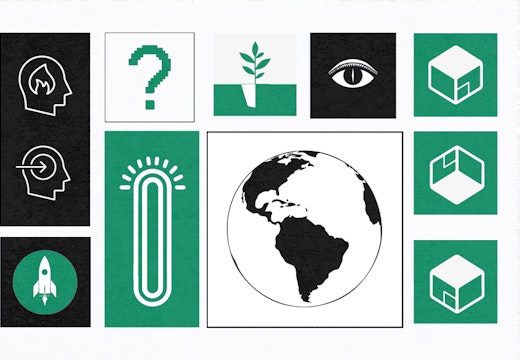Death of dull: Toronto 2019 tracks the big changes ahead
The Canadian workplace has a reputation for caution on major workplace shifts, but an action-packed WORKTECH Toronto 2019 conference suggested an eye firmly on the future
Canada is not typically viewed as an early adopter of workplace trends. However, WORKTECH Toronto 2019, which combined an Innovation Day masterclass at McCarthy Tétrault with a one-day conference event at Deloitte, suggested that they’re not about to be left behind.
The opening keynote, by Sheila Botting, National Leader for Real Estate & Construction at Deloitte, and Earle Arney, CEO of Arney Fender Katsalidis Architects, confidently proclaimed the ‘death of dull’ for workplace interiors. With Deloitte’s own Toronto headquarters as a case study, they outlined the importance of workplace as an instrument of transformational change. Arney pointed out that while 98 per cent of five-year olds are judged to be creative, this figure plummets to only two per cent of the adult population. Addressing this requires architects to shift from designers of buildings to curators of experience, stimulating our curiosity and willingness to explore all the way through our working lives.
All about experience
The importance of experience ran as a constant theme throughout the Toronto event. Imogen Privett of WORKTECH Academy discussed the shift from user experience to super experience as organisations move from clarity and optimisation towards empathy and intrigue. Based on a report by Australian developers Mirvac with the Academy, she looked at the subject from three key perspectives: creating a sense of awe, curation and life-long learning.
From spaces for learning to the space itself as a learning organism, Arjun Kaicker, Head of User Parametrics at Zaha Hadid Architects, set out a vision of the workplace as fluid and constantly learning from user preferences, with the creation of digital tools enabling people to be guided around a space and receive personalised suggestions based on their preferences. Kaicker also demonstrated the benefits of an organic approach using a series of parametric models that showed increases in visual connection and reachability over a more traditional, linear approach.
Kristi Woolsey, Behavioural and Workplace Strategy Lead at BCG Platinion, picked up the themes of digital intelligence in space, predicting a future of ‘silicon intelligence’ that allows human capital and real estate to talk to each other. While there are concerns about data privacy, her research has found that users are willing to interact with buildings where there is a clear exchange in value – for example, wayfinding that learns whether they would prefer the fastest route, to bump into colleagues or pick up a coffee on the way.
Working better together
The second big theme was how we work better together – both face to face and in our online interactions. Beth Porter, CEO at RIFF Learning, saw a future of increasingly distributed teams coming together online. Porter proposed a new suite of meeting tools that measure and pick up some of the social cues that we miss when we’re not all in the same room. Further, with dynamic conversations leading to higher information flow and better decision making, speech-based conversational AI can be used to build models of collective intelligence.
Shifting from our online interactions to the physical space, Gus Scaiano and Colleen Baldwin of Scotiabank delivered a case study about creating environments for agile development teams. Grounded in research about agile team needs and workstyles, Scotiabank created a concept called ‘Activity Based Agile’, with concentric rings of space that support different needs – from a scrum wall and paired development areas to individual focus spaces and social gathering zones.
‘Concentric rings of space that support different needs of agile development teams…’
Peter Smit of Collabogence followed, pointing out that while you can design a fantastic space, if you put the wrong people in it then nothing will happen. Smit presented a suite of data tools that provide insight into inter- and intra-group dynamics that allow for adjacency optimisation – both within a single building and across campuses, making sure that teams can best leverage their collective experience.
A panel discussion led by Brent Lowe, author of Reinventing Scaleups, shifted the discussion from team collaboration to team leadership. Peter Aprile of Counter Tax, Michelle Moore of ET Group and Simon Mhanna of The Moment, all from self-organising companies, set out a decentralised governance model that gives independence and autonomy to people throughout an organisation. The advantages of this approach are a clearly articulated purpose and accountability, and a shift from predict-and-control to a much more flexible sense and respond approach.
Sustainable futures
Scott Francisco from Pilot Projects Design Collective rounded off the event with a call to action on sustainability. He argued that the systems that we’ve built are undermining our very survival. With around 25 per cent of the global population in a conventional workplace, the industry has a disproportionate level of both consumption and influence. Francisco made a powerful argument that workplaces should consider themselves to be powerful agents of system change; with forests one of our best defences in the fight against carbon emissions, we need to build new systems that make the workplace industry a bastion of ‘forest positive action’.
Clearly, on the evidence of WORKTECH Toronto 2019, the Canadian workplace industry is capable of seeing the wood from the trees.






